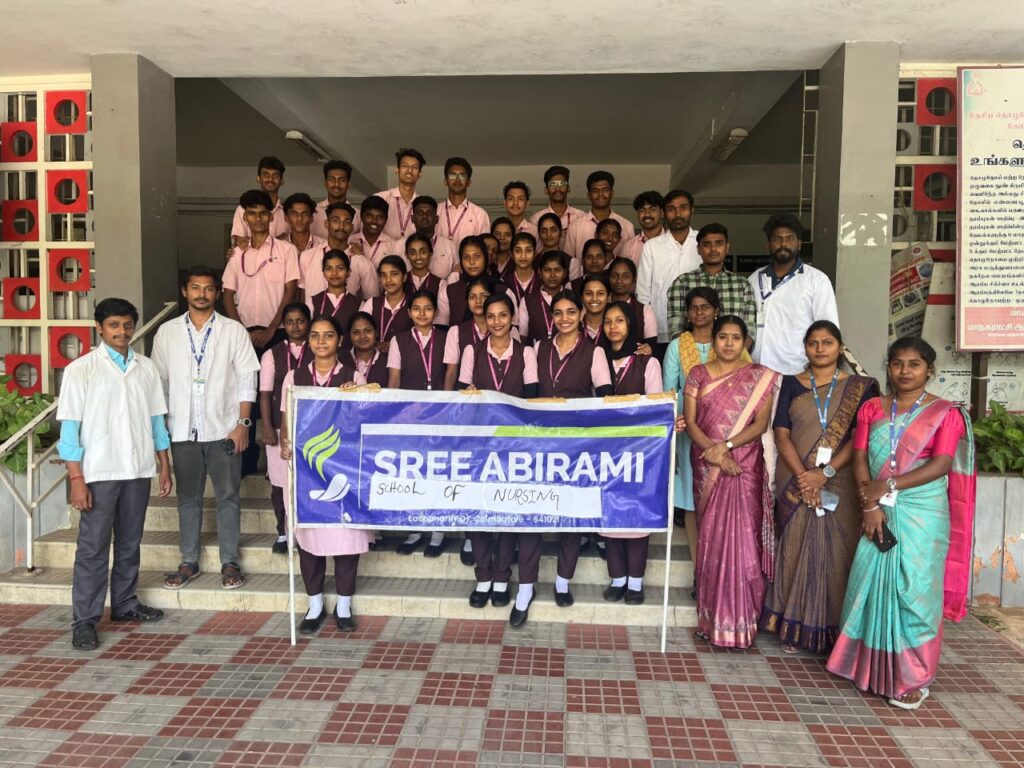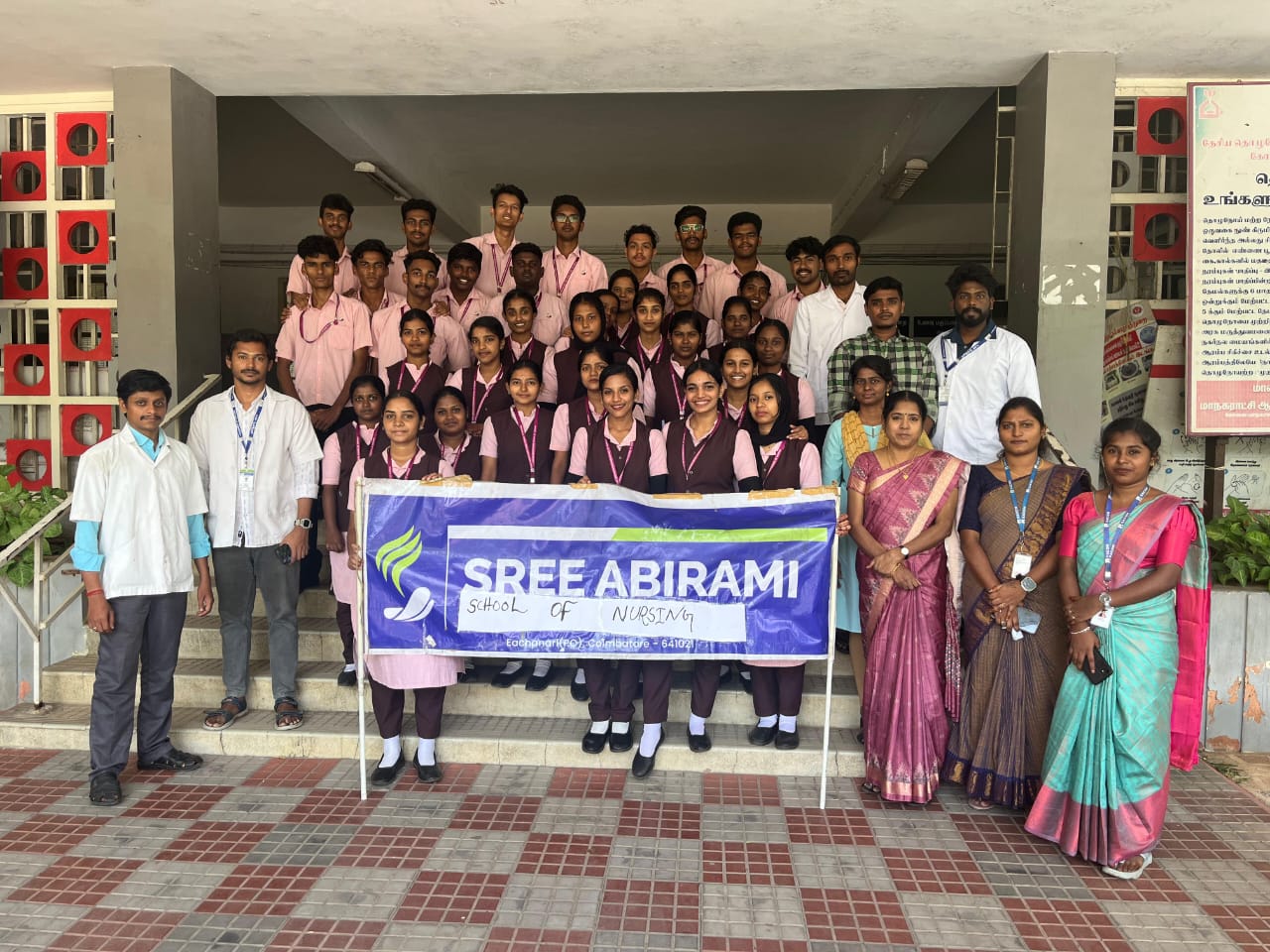
Field Visit to Ukkadam Slaughterhouse – A Practical Insight into Hygiene and Public Health
Organized by Sree Abirami School of Nursing, Coimbatore
Date: 25th June 2025 | Venue: Ukkadam Slaughterhouse, Coimbatore
As part of their foundational training in public health and environmental hygiene, the first-year GNM students of Sree Abirami School of Nursing, Coimbatore undertook an educational field visit to the Ukkadam Slaughterhouse on 25th June 2025. The visit aimed to provide students with hands-on exposure to the operational, anatomical, and sanitation aspects of meat processing—a critical area often overlooked in traditional nursing education.
A total of 32 students, accompanied by faculty members Ms. Sharmila and **Ms. Justin participated in the visit. The team arrived at the slaughterhouse by *7:00 AM*, where they were received with official permission and guided by on-site staff throughout the facility. The visit was carefully structured to ensure educational value while maintaining respect for the ethical and hygiene standards upheld at the facility.
The slaughterhouse at Ukkadam plays a crucial role in ensuring the hygienic and regulated processing of meat for public consumption. It is a government-regulated facility that adheres to protocols for the humane slaughter of animals, efficient waste management, and sanitation. These elements directly relate to public health and disease prevention, making the experience especially valuable for future nurses.
The students observed the step-by-step slaughtering process, which included animal handling, stunning, slaughter, bleeding, dressing, and evisceration. The facility staff ensured that students understood the significance of each phase and the reasons for strict adherence to hygiene and safety procedures. Special attention was given to ethical practices, ensuring animals were handled humanely and with minimal stress, following animal welfare guidelines.
The staff demonstrated key hygiene practices, including regular cleaning of floors, disinfection of tools and equipment, and the mandatory use of protective gear by slaughterhouse workers. Students noted how the use of gloves, aprons, boots, and hair coverings contributed to the prevention of contamination. In addition, handwashing stations and sterilization units were strategically placed to encourage consistent sanitation.
Another important learning aspect was waste disposal management. The students were introduced to solid and liquid waste segregation, and shown how blood, bones, and offal were properly managed to prevent environmental contamination. The facility followed guidelines issued by local health authorities and pollution control boards, offering the students real-world insight into environmental hygiene practices that are crucial in disease control.
One of the most impactful segments of the visit was the opportunity to observe animal anatomy. Students examined internal organs such as the liver, heart, kidneys, lungs, and intestines of goats, which offered a unique comparative view of animal and human physiology. This experience not only enhanced their anatomical knowledge but also strengthened their observation skills—an essential trait in clinical nursing practice.
Throughout the visit, students were encouraged to ask questions, reflect on what they observed, and connect the practical exposure to subjects such as microbiology, community health nursing, and anatomy. The interaction between students and facility staff was engaging and informative, transforming the visit into a dynamic learning session.
The field visit concluded with a discussion and feedback session, where students expressed their gratitude for the experience and shared how it changed their perspective on hygiene, food safety, and the broader role of nursing professionals in public health.
This educational experience at the Ukkadam Slaughterhouse reinforced the students’ understanding of how cleanliness, ethical handling, waste management, and anatomy are interconnected. It also emphasized the nurse’s role in promoting food safety and hygiene within communities.
By integrating community-based learning with core curriculum subjects, Sree Abirami School of Nursing continues to shape competent, compassionate, and well-informed healthcare professionals ready to make a difference in society, starting from the grassroots.
